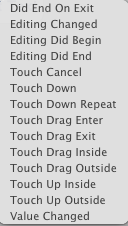acme font | google web fonts
 Download Acme Font. Aceme.ttf font available to download free.
Download Acme Font. Aceme.ttf font available to download free.
Acme is a condensed display typeface inspired by the visual language of classic cartoons and comics. It is designed to be used in headlines, and has a particular and groovy rhythm. The resulting texts are vivid but consistent, and its expressive characteristics work as well on screen as in print. The glyphs were each carefully designed, with top curve quality. It is well balanced, and carefully spaced by eye.
Designed by Juan Pablo del Peral for Huerta Tipográfica.
Download Actor-Regular font
Installing wordpress locally on windows machine with the XAMPP server.
Installing wordpress locally on windows machine with the XAMPP server.
installing wordpress using xampp edit in notepad++
Step-by-Step Installation process of wordpress.
Download from wordpress.org
iOS 9 features
ios-9-features are
1. app switcher puts app icon on top rather than bottom, otherwise no change.
2. i can now make my iphone force me to remember people’s actual phone numbers and email addresses?
3. faster scrolling through pictures does seem nice. i still miss seeing all of my places on the map though.
4. since the messages app only allows one person’s texts on screen at a time, and their name is at the top, what’s the point?
5. how is sorting notifications by “recent” any different than by time? and more importantly, when will apple restore the single-screen notifications that included calendar events, or at least give us the option to restore this feature? and when will apple allow us to see events further than 6 hours away? and will they finally kill the stupid “you have an appointment tomorrow, but i’m not telling you what or where”?
6. that looks like a useful feature for spotlight search.
7. no! don’t launch and play music when i plug in my headset to talk!
8. is making icloud its own app like making facetime its own app? i.e., separate app but no new functionality, and you’ll never use it anyway b/c you’ll only access it through the primary app (like phone for facetime).
9. i can see the value in split screening. pity it requires new hardware though.
10. my spotlight search on my iphone 6 with ios 8 does not find any contacts at all, so this sounds like a huge improvement over opening my contacts app and scrolling the list
11. b/c apple pay was so hard to use before. uh huh.
12. um, lack of transit or “what’s nearby” weren’t the reasons that nobody uses apple’s native maps app.
13. a power save mode that disables your phone’s functionality. i can only hope they got rid of the low battery warnings that freeze your phone while still allowing the app that’s causing the drain to continue to burn juice.
14. that list of albums doesn’t show videos. i tremble when apple adds dubious functionality, but removes meaningful functionality.
15. ooh fonts! like demanding i update to add smilies. there’s another 1 gb of space on my phone gone. there’s a reason i never “up”graded to 8.3.
16. the shift key is great! i hate having to guess.
17. the back button is nice, yes. next up is a setting that prevents hijacking (like certain ads on safari pages that force launch the app store).
18. i know, sharing notes is a game-changer. b/c before this, the iphone had no means to send texts or emails. oh wait…
19. doesn’t interacting with (tapping) siri defeat its purpose?
20. searchable settings is definitely an improvement.
21. again, lack of transit ain’t the reason no one uses apple maps.
22. because there’s nothing i love more than big images that slow my downloads and make me wait forever to read an article.
23. stopped reading at apple watch.
24. selecting text is really needed for the iphone, where the screen is small and it can be hard to find the text you need to select.
25. the real question will be what apps, and the functionality of those apps, you can run while picture-in-picture is playing a video.
Execution States for Apps in iOS

| State | Description |
|---|---|
| Not running | The app has not been launched or was running but was terminated by the system. |
| Inactive | The app is running in the foreground but is currently not receiving events. (It may be executing other code though.) An app usually stays in this state only briefly as it transitions to a different state. |
| Active | The app is running in the foreground and is receiving events. This is the normal mode for foreground apps. |
| Background | The app is in the background and executing code. Most apps enter this state briefly on their way to being suspended. However, an app that requests extra execution time may remain in this state for a period of time. In addition, an app being launched directly into the background enters this state instead of the inactive state. For information about how to execute code while in the background, see Background Execution. |
| Suspended | The app is in the background but is not executing code. The system moves apps to this state automatically and does not notify them before doing so. While suspended, an app remains in memory but does not execute any code.
When a low-memory condition occurs, the system may purge suspended apps without notice to make more space for the foreground app. |
C programming
Q1. Which of the following statements should be used to obtain a remainder after dividing 3.14 by 2.1 ?
A. rem = 3.14 % 2.1;
B. rem = modf(3.14, 2.1);
C. rem = fmod(3.14, 2.1);
D. Remainder cannot be obtain in floating point division.
Answer: Option C
Explanation:
fmod(x,y) – Calculates x modulo y, the remainder of x/y.
This function is the same as the modulus operator. But fmod() performs floating point divisions.
Example:
#include <stdio.h>
#include <math.h>
int main ()
{
printf ("fmod of 3.14/2.1 is %lf\n", fmod (3.14,2.1) );
return 0;
}
Output:
fmod of 3.14/2.1 is 1.040000
| Q.3Which of the following special symbol allowed in a variable name? | ||||||||
Answer: Option D Explanation: Variable names in C are made up of letters (upper and lower case) and digits. The underscore character (“_”) is also permitted. Names must not begin with a digit. Examples of valid (but not very descriptive) C variable names: |
Q.4 Is there any difference between following declarations?
|
||||||||
Answer: Option B Explanation: extern int fun(); declaration in C is to indicate the existence of a global function and it is defined externally to the current module or in another file. int fun(); declaration in C is to indicate the existence of a function inside the current module or in the same file. |
| Q.5 How would you round off a value from 1.66 to 2.0? | ||||||||
Answer: Option A Explanation: |
Q.6 By default a real number is treated as a.?
| By default a real number is treated as a | ||||||||
Answer: Option B Explanation: In computing, ‘real number’ often refers to non-complex floating-point numbers. It include both rational numbers, such as 42 and 3/4, and irrational numbers such as pi = 3.14159265… When the accuracy of the floating point number is insufficient, we can use the double to define the number. The double is same as float but with longer precision and takes double space (8 bytes) than float. To extend the precision further we can use long double which occupies 10 bytes of memory space. |
Q.7 Which of the following is not user defined data type?
Which of the following is not user defined data type?
|
||||||||
Answer: Option B Explanation: C data types classification are
So, clearly long int l = 2.35; is not User-defined data type. |
Q.8 Is the following statement a declaration or definition?
| Is the following statement a declaration or definition? extern int i; |
||||||||
Answer: Option A Explanation: Declaring is the way a programmer tells the compiler to expect a particular type, be it a variable, class/struct/union type, a function type (prototype) or a particular object instance. (ie. extern int i) Declaration never reserves any space for the variable or instance in the program’s memory; it simply a “hint” to the compiler that a use of the variable or instance is expected in the program. This hinting is technically called “forward reference”. |
Q.9 Identify which of the following are declarations.
Identify which of the following are declarations
|
||||||||
Answer: Option C Explanation: extern int x; – is an external variable declaration. double pow(double, double); – is a function prototype declaration. Therefore, 1 and 3 are declarations. 2 is definition. |
Q.10 In the following program where is the variable a getting defined and where it is getting declared?
In the following program where is the variable a getting defined and where it is getting declared?
|
||||||||
Answer: Option A Explanation: – During declaration we tell the datatype of the Variable. – During definition the value is initialized. |
Q.11 When we mention the prototype of a function?
| When we mention the prototype of a function? | ||||||||
Answer: Option B Explanation: A function prototype in C or C++ is a declaration of a function that omits the function body but does specify the function’s name, argument types and return type. While a function definition specifies what a function does, a function prototype can be thought of as specifying its interface. |
Q.12 What is the output of the program given below ?
What is the output of the program given below ?
|
||||||||
Answer: Option C Explanation: enum takes the format like {0,1,2..) so pass=0, fail=1, atkt=2 stud1 = pass (value is 0) stud2 = atkt (value is 2) stud3 = fail (value is 1) Hence it prints 0, 2, 1 |
Q.13 What will be the output of the program in 16 bit platform (Turbo C under DOS)?
What will be the output of the program in 16 bit platform (Turbo C under DOS)?
|
||||||||
Answer: Option D Explanation: Linker Error : Undefined symbol ‘i’ |
Q.15 What is the output of the program?
What is the output of the program?
|
||||||||
Answer: Option A Explanation: extern int a; indicates that the variable a is defined elsewhere, usually in a separate source code module. printf(“%d\n”, a); it prints the value of local variable int a = 20. Because, whenever there is a conflict between local variable and global variable, local variable gets the highest priority. So it prints 20. |
Q.16 What is the output of the program in Turbo C (in DOS 16-bit OS)?
What is the output of the program in Turbo C (in DOS 16-bit OS)?
|
||||||||
Answer: Option C Explanation: Any pointer size is 2 bytes. (only 16-bit offset) Since C is a compiler dependent language, it may give different output in other platforms. The above program works fine in Windows (TurboC), but error in Linux (GCC Compiler). |
Q.17 What is the output of the program
What is the output of the program
|
||||||||
Answer: Option A Explanation: When an automatic structure is partially initialized remaining elements are initialized to 0(zero). |
Q.18 What will be the output of the program?
What will be the output of the program?
|
||||||||
Answer: Option A Explanation: Whenever there is conflict between a local variable and global variable, the local variable gets priority. |
Q.19 What is the output of the program
What is the output of the program
|
||||||||
Answer: Option B Explanation: Since x < y turns to be TRUE it is replaced by 1. Then 1 < z is compared and to be TRUE. The 1 is assigned to i. |
Q.20 What is the output of the program
What is the output of the program
|
||||||||||
Answer: Option E Explanation: 2 Errors |
Q.21 What is the output of the program
What is the output of the program
|
||||||||
Answer: Option D Explanation: When an automatic array is partially initialized, the remaining elements are initialized to 0. |
Q.22 What is the output of the program?
What is the output of the program?
|
||||||||
Answer: Option A Explanation: printf(“%d, %d, %d\n”, u.ch[0], u.ch[1], u.i); It prints the value of u.ch[0] = 3, u.ch[1] = 2 and it prints the value of u.i means the value of entire union size.
So the output is 3, 2, 515. |
Q.23 In the following program how long will the for loop get executed?
In the following program how long will the for loop get executed?
|
||||||||
Answer: Option D Explanation: During the for loop execution scanf() ask input and then printf() prints that given input. This process will be continued repeatedly because, scanf() returns the number of input given, the condition is always true(user gives a input means it reurns ‘1’). Hence this for loop would get executed infinite times. |
Q.24 What will be the output of the program?
What will be the output of the program?
|
||||||||
Answer: Option B Explanation: In case of a conflict between a local variable and global variable, the local variable gets priority. |
Q.25 Point out the error in the following program (if it is compiled with Turbo C compiler).
Point out the error in the following program (if it is compiled with Turbo C compiler).
|
||||||||
Answer: Option C Explanation: In this program the compiler will not know that the function display() exists. So, the compiler will generate “Type mismatch in redeclaration of function display()“. To over come this error, we have to add function prototype of function display(). Output: swamiOS.in Note: This problem will not occur in modern compilers (this problem occurs in TurboC but not in GCC). |
Q.26 Point out the error in the following program.
Point out the error in the following program.
|
||||||||
Answer: Option A |
Q.27 Point out the error in the following program.
Point out the error in the following program.
|
||||||||
Answer: Option B Explanation: There is an error in the line emp int xx; To overcome this error, remove the int and add the struct at the begining of emp int xx; |
Q.28 Which of the following is correct about err used in the declaration given below?
Which of the following is correct about err used in the declaration given below?
|
||||||||
Answer: Option A Explanation: A typedef gives a new name to an existing data type. |
Q.29 Point out the error in the following program.
Point out the error in the following program.
|
||||||||
Answer: Option B Explanation: The compiler will not know that the function int fun() exists. So we have to define the function prototype of int fun(); |
Q.30 Which of the declaration is correct?
| Which of the declaration is correct? | ||||||||
Answer: Option A Explanation: int length; denotes that variable length is int(integer) data type. char int; here int is a keyword cannot be used a variable name. int long; here long is a keyword cannot be used a variable name. float double; here double is a keyword cannot be used a variable name. So, the answer is int length;(Option A). |
Q.31 Which of the following operations are INCORRECT?
| Which of the following operations are INCORRECT? | ||||||||
Answer: Option D Explanation: float a = 3.14; a = a%3; gives “Illegal use of floating point” error. The modulus (%) operator can only be used on integer types. We have to use fmod() function in math.h for float values. |
Q.32 Which of the following correctly represents a long double constant?
| Which of the following correctly represents a long double constant? | ||||||||
Answer: Option B Explanation: 6.68 is double. |
Q.33 Which of the structure is incorrecet?
Which of the structure is incorrect?
|
||||||||
Answer: Option B Explanation: Option B gives “Undefined structure in ‘aa'” error. |
Q.34 Which of the structure is correct
Which of the structure is correct?
|
||||||||
Answer: Option A Explanation: In 2 and 3 semicolon are missing in structure element. |
Q.35 A long double can be used if range of a double is not enough to accommodate a real number.
| A long double can be used if range of a double is not enough to accommodate a real number. | ||||
Answer: Option A Explanation: True, we can use long double; if double range is not enough. double = 8 bytes. |
Q.36 A float is 4 bytes wide, whereas a double is 8 bytes wide.
| A float is 4 bytes wide, whereas a double is 8 bytes wide. | ||||
Answer: Option A Explanation: True, |
Q.37 If the definition of the external variable occurs in the source file before its use in a particular function, then there is no need for an extern declaration in the function
| If the definition of the external variable occurs in the source file before its use in a particular function, then there is no need for an extern declaration in the function. | ||||
Answer: Option A Explanation: True, When a function is declared inside the source file, that function(local function) get a priority than the extern function. So there is no need to declare a function as extern inside the same source file. |
Q.38 Size of short integer and long integer can be verified using the sizeof() operator.
| Size of short integer and long integer can be verified using the sizeof() operator. | ||||
Answer: Option A Explanation: True, we can find the size of short integer and long integer using the sizeof() operator. Output: |
Q.39 Size of short integer and long integer would vary from one platform to another.
| Size of short integer and long integer would vary from one platform to another. | ||||
Answer: Option A Explanation: True, Depending on the operating system/compiler/system architecture you are working on, the range of data types can vary. |
Q.40 Is there any difference in the following declarations?
| Is there any difference in the following declarations? int myfun(int arr[]); int myfun(arr[20]); |
||||
Answer: Option A Explanation: Yes, we have to specify the data type of the parameter when declaring a function. |
Q.41 Suppose a program is divided into three files f1, f2 and f3, and a variable is defined in the file f1 but used in files f2 and f3. In such a case would we need the extern declaration for the variables in the files f2 and f3?
Answer: Option A |
Q.42 Is it true that a global variable may have several declarations, but only one definition?
| Is it true that a global variable may have several declarations, but only one definition? | ||||
Answer: Option A Explanation: Yes, In all the global variable declarations, you need to use the keyword extern. |
Q.43 Is it true that a function may have several declarations, but only one definition?
| Is it true that a function may have several declarations, but only one definition? | ||||
Answer: Option A Explanation: Yes, but the function declarations must be identical. Example: |
You can do best practice here
| swamios.com ® | swamios media ♫ |
 |
Gesture Recognizing in iOS
1)Tapping (UITapGestureRecognizer): Tapping one or more fingers on the screen.
2)Long Pressing (UILongPressGestureRecognizer): Pressing one or more fingers to the screen for a specific period of time.
3)Pinching (UIPinchGestureRecognizer): Pinching to close or expand something.
4)Rotating (UIRotationGestureRecognizer): Sliding two fingers in a circular moton.
5)Swiping (UISwipGestureRecognizer): Swiping with one ormore fingers in a specific direction.
6)Panning (UIPanGestureRecognizer): Touching and dragging.
7) Shaking : Physically shaking the iOS device.
Button Event Action in iOS. UIControlEventTouchUpInside,UIControlEventTouchDown.
- A system event canceling the current touches for the control.
UIControlEventTouchDown
- A touch-down event in the control.
UIControlEventTouchDownRepeat
- A repeated touch-down event in the control; for this event the value of the UITouch tapCount method is greater than one.
UIControlEventTouchDragEnter
- An event where a finger is dragged into the bounds of the control.
UIControlEventTouchDragExit
- An event where a finger is dragged from within a control to outside its bounds.
UIControlEventTouchDragInside
- An event where a finger is dragged inside the bounds of the control.
UIControlEventTouchDragOutside
- An event where a finger is dragged just outside the bounds of the control.
UIControlEventTouchUpInside
- A touch-up event in the control where the finger is inside the bounds of the control.
UIControlEventTouchUpOutside
- A touch-up event in the control where the finger is outside the bounds of the control.







 About-Us
About-Us

You must be logged in to post a comment.